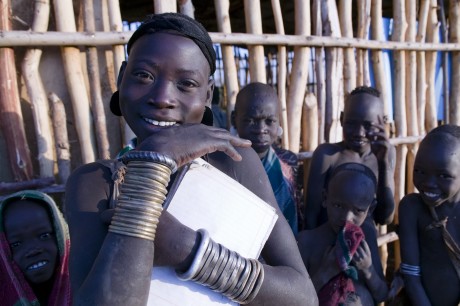I began to write this project as an intention to increase people’s awareness about the female education in Rwanda. I hope this can be used as a reference for any one who is interested in changing the current condition in Rwanda.
Abstract
The lack of female education leads to an unequal participation in the labor force and the feminization of poverty. Most of the women can only work on farms to support the family and become more vulnerable to contracting HIV when they have to exchange sexual behavior for additional food. This gender disparity in income earning causes lots of mothers to prefer boys instead of girls, aggravating the gender inequality condition. As a result, girls are more likely to drop out schools to work on housework than boys do. This results in a vicious circle.
The Current State of Female Education
World Bank studies show that 150 million children currently enrolled in school will drop out before even completing primary school, and 100 million of them are girls. The gender gap between boys and girls in primary school completion is greater than 10% points. In other words, millions more girls than boys are dropping out each year. What is more, after primary school, female students who attend secondary school in Africa are only 17%.
Impact of Education
Education can lead to higher wages. Data shows that an extra year of education beyond the average can boosts female wage by 10-20%. Thus, women are able to receive a higher return on education. In addition, women will get a higher return, 15-25%, if they can complete secondary education. World Bank data also finds out that 1% increase in share of women with a secondary education can boost annual per capita income growth by 0.3%. This is a significant increase for developing countries. Educated women help reduce malnutrition by 43% between 1970 and 1995 due to more productive farming. What is more, an extra year of female education can decrease infant mortality by 5 to 10%. Most importantly, educated women have more impact on children’s schooling than the educated men do. For example, a study shows that children of educated women study two extra hours per day. In other words, educated women knew that education could change the future generation’s lives and highly support education for both genders. Lastly, a review of 113 studies indicates that school-based AIDS education programs are effective in reducing early sexual activity and high-risk behavior. In other words, educated women are less likely to contract HIV.
Disparity Between the Benefits of Education and the Low Level of Attainment
Gender parity in primary enrolment had already been achieved by 2000/01 and now the rate is slightly higher for girls (87%) than for boys (85%). Thus, by 2005, Rwanda has achieved the Education for All Goal of eliminating gender disparities in primary education in terms of attendance. However, girls are lagging behind boys in terms of completion rates and on exam scores. Gender disparities emerge after the third grade, as well as in upper secondary schooling and higher education. The Education for All Goal also emphasizes the need not only for girls to be present in school, but also for attention to be paid to their needs in relation to teaching and learning practices, curricula and the safety of the school environment. The girls’ education policy includes a school campaign to encourage girls’ performance in school as well as remedial classes during vacations. Rwanda’s approach to achieving gender equality and women’s empowerment is based on three major pillars: established political will and support; appropriate mechanisms within government and society at large; and existence of a strong autonomous women’s movement.
Despite having achieved parity at primary school level, girls dropout school and have low enrolment at higher level of education are because of both economical and social constraints The increased number of government and private tertiary institutions, technical schools, and universities has increased the access of women to university education.
Recommendations:
One suggestion to further promote education in Rwanda is to adopt an education policy that prevents parents who prefer male to female education due to financial constraints.
The government can also cooperates with global organization to create special programs for promoting female education. Most importantly, the government should enforce legal and constitutional guarantees for women’s rights.
Citations:
NISR. (2007, September 1). Millennium Development Goals– Towards sustainable social and economic growth. Retrieved November 15, 2014, from http://www.undp.org/content/dam/undp/library/MDG/english/MDG Country Reports/Rwanda/MDGs-NOV2007.pdf
Musoni, J. (Ed.). (2008, March 1). Rwanda: Poverty Reduction Strategy Paper. Retrieved November 15, 2014, from http://www.imf.org/external/pubs/ft/scr/2008/cr0890.pdf
Psacharopoulos, G. (2002, September 1). Returns to Investment in Education: A Further Update. Retrieved November 15, 2014, from http://elibrary.worldbank.org/doi/pdf/10.1596/1813-9450-2881

